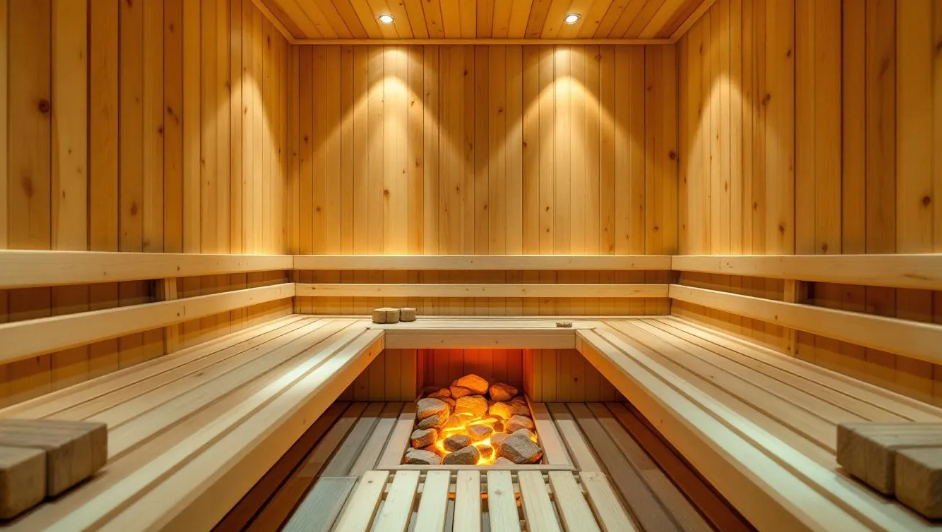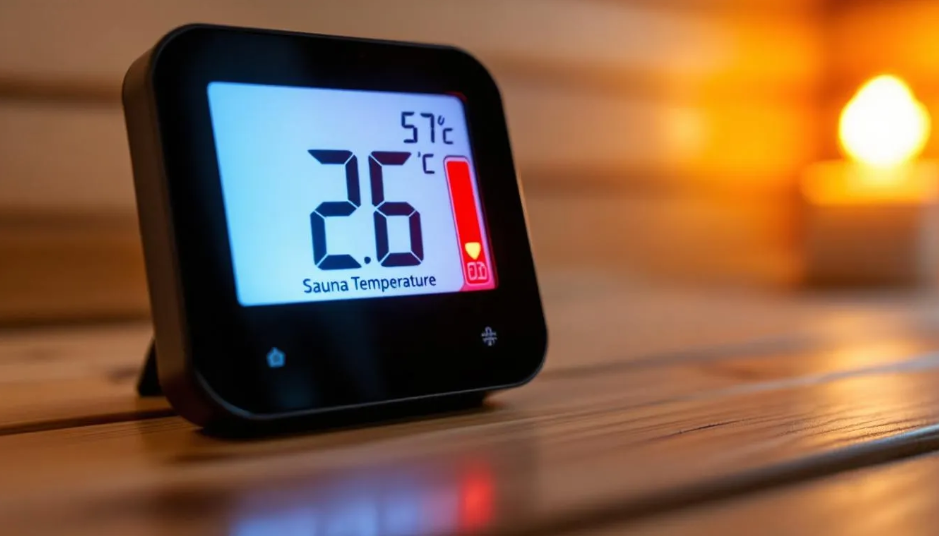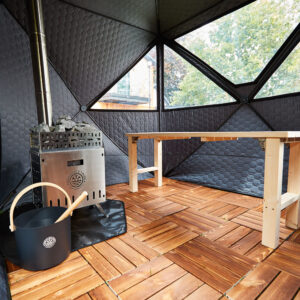
Ice Baths: A Key to Enhanced Recovery and Vitality for Athletes
Explore how ice baths can boost recovery and enhance vitality for athletes. Discover practical tips and insights to elevate your performance. Read more!
Spend Over £500 To Get Free UK Delivery - Excludes Certain Postcodes & Round Ice Baths

Regular sauna use can reduce your risk of cardiovascular disease by up to 63% – a benefit that rivals many prescription medications. This remarkable statistic comes from extensive Finnish research spanning decades, revealing that what many consider a luxury wellness practice is actually a powerful tool for improving health and longevity.
Sauna bathing has been a cornerstone of Scandinavian culture for over 2,000 years, but modern science is now validating what these cultures have long known intuitively. From reducing sudden cardiac death risk to improving sleep quality and easing chronic pain, the health benefits of regular sauna use extend far beyond simple relaxation.
This comprehensive guide examines sauna benefits, explores different types of saunas, and provides essential safety guidelines to help you harness this ancient practice for modern wellness. Whether you’re considering your first sauna session or looking to optimise your current routine, you’ll discover evidence-based protocols that can transform your health.

The world of saunas encompasses several distinct types, each offering unique approaches to heat therapy. Understanding these differences helps you choose the most suitable option for your health goals and tolerance levels.
Traditional Finnish saunas represent the gold standard of sauna bathing, operating with dry heat at temperatures between 80-100°C (176-212°F) with low humidity levels of 10-20%. These saunas are typically heated using wood-burning stoves or electric heaters that warm sauna rocks, which then radiate intense heat throughout the sauna room.
The low-humidity environment allows your body to efficiently regulate temperature through sweating, while the high heat creates the physiological responses that generate most sauna benefits. Traditional saunas can accommodate the classic ritual of pouring water over heated rocks to create brief bursts of steam, temporarily increasing relative humidity and intensifying the heat sensation.
Infrared saunas operate differently from traditional saunas, using infrared lamps to directly heat your body rather than warming the surrounding air. These systems maintain lower ambient temperatures (45-60°C or 113-140°F), making them more tolerable for heat-sensitive individuals while still delivering significant health benefits.
A far infrared sauna penetrates deeper into tissue compared to traditional dry heat, potentially offering enhanced muscle recovery and pain relief benefits. The infrared room environment allows for longer sessions since the lower air temperature reduces the stress on your cardiovascular system while still triggering beneficial physiological responses.
Steam rooms provide an entirely different experience, using moist heat with temperatures around 37-49°C (98-120°F) and nearly 100% relative humidity. This room heated with steam offers unique respiratory tract benefits, as the humid environment can help with mucus clearance and airway opening.
However, the high humidity in steam rooms reduces your body’s ability to cool itself through sweat evaporation, limiting session duration and potentially reducing some cardiovascular benefits compared to dry saunas.
When using a sauna, your body attempts to maintain core temperature through several remarkable adaptations. Your autonomic nervous system triggers increased heart rate (potentially reaching 100-150 beats per minute), dilates blood vessels, and activates sweating mechanisms.
This response increases circulation, delivering more oxygen and nutrients to tissues while facilitating the removal of metabolic waste products. The cardiovascular workout created by sitting in a sauna mimics moderate exercise without physical exertion, explaining many of the heart health benefits associated with regular sauna use.
The most compelling sauna benefits emerge in cardiovascular health, where decades of research have established remarkable protective effects. Large-scale Finnish studies involving thousands of participants provide robust evidence for the sauna’s impact on heart disease prevention.
Men using saunas 2-3 times per week showed a 27% reduction in cardiovascular mortality compared to once-weekly users. Even more impressive, those enjoying 4-7 sauna sessions weekly experienced up to a 63% reduction in fatal cardiovascular events and a 40% reduction in all-cause mortality.
These benefits appear dose-dependent, meaning more frequent sauna use correlates with greater protection. Sessions lasting more than 20 minutes provide additional benefits beyond shorter exposures, suggesting that allowing your body adequate time to adapt to the heat stress maximises cardiovascular gains.
Regular sauna use significantly impacts blood pressure through multiple mechanisms. The heat exposure enhances nitric oxide bioavailability, a crucial molecule that helps blood vessels relax and dilate. This improved vascular function reduces arterial stiffness and lowers systemic vascular resistance.
Clinical studies demonstrate that just two weeks of daily 15-minute sauna sessions can reduce systolic blood pressure by approximately 10 mm Hg. For individuals with high blood pressure, this reduction represents a clinically meaningful improvement that may reduce reliance on medication when combined with other lifestyle interventions.
Sauna bathing positively influences your autonomic nervous system, improving heart rate variability – a marker of cardiovascular resilience and stress adaptation. Regular sauna use helps balance sympathetic and parasympathetic nervous system activity, leading to better stress recovery and improved cardiac function.
This autonomic modulation may explain why sauna benefits extend beyond immediate cardiovascular effects to influence sleep quality, stress resilience, and overall wellbeing. The heat stress acts as a form of hormetic stress, strengthening your body’s adaptive responses.
Finnish research reveals a 62% lower stroke risk for individuals using saunas 4-7 times weekly compared to once-weekly users. This protection likely stems from the combined effects of improved vascular function, reduced blood pressure, and enhanced circulation patterns that regular heat exposure creates.
The stroke prevention benefits appear particularly pronounced in middle-aged and older adults, suggesting that sauna use may be especially valuable as a preventive strategy during periods of increased cardiovascular risk.

Beyond physical health, sauna benefits extend significantly into mental wellness, offering natural stress relief and cognitive protection that modern life desperately needs.
Regular sauna bathing produces measurable reductions in cortisol, your body’s primary stress hormone. Studies document cortisol decreases of 10-40% following consistent sauna use, representing a significant improvement in your body’s stress response.
This cortisol reduction helps break the cycle of chronic stress that contributes to numerous health problems, from impaired immune function to accelerated ageing. The heat-induced relaxation response activates your parasympathetic nervous system, promoting recovery and restoration.
Among regular sauna users, 83.5% report improved sleep quality – a benefit that cascades into numerous other areas of health and performance. The heat exposure followed by cooling creates optimal conditions for sleep onset by triggering your body’s natural temperature regulation patterns.
Better sleep enhances everything from immune function to cognitive performance, making the sleep benefits of sauna use particularly valuable for overall wellness. The stress reduction and muscle relaxation achieved during sauna sessions also contribute to more restful, restorative sleep.
Perhaps the most remarkable finding from long-term research involves cognitive health. A 20-year Finnish study revealed that individuals using saunas 4-7 times weekly had a 66% lower risk of developing dementia and alzheimer’s disease compared to once-weekly users.
This neuroprotective effect may stem from improved circulation to the brain, reduced inflammation, and the production of heat shock proteins that protect neurons from damage. The social aspects of sauna bathing in Scandinavian culture may also contribute to cognitive health through enhanced social connection and stress reduction.
Sauna sessions trigger the release of endorphins and other mood-enhancing neurotransmitters, creating natural feelings of wellbeing and relaxation. Many users report reduced anxiety and improved mood following regular sauna use, benefits that may persist beyond the immediate post-session period.
The meditative quality of sitting quietly in heat creates an opportunity for mental decompression and mindfulness, further enhancing the psychological benefits of this ancient practice.
For athletes and individuals dealing with chronic pain conditions, sauna benefits include significant improvements in pain management and recovery processes.
The increased blood flow generated by sauna use delivers more oxygen and nutrients to skeletal muscles while facilitating the removal of metabolic waste products like lactate. This enhanced circulation accelerates post-workout recovery and may reduce muscle soreness following intense exercise.
Heat exposure also stimulates the release of brain-derived neurotrophic factor (BDNF), a protein that supports muscle healing and adaptation. For athletes and fitness enthusiasts, regular sauna use can serve as an effective alternative or complement to massage guns, muscle rollers, and other recovery modalities.
Clinical studies demonstrate significant benefits for individuals with chronic pain conditions, particularly rheumatoid arthritis and ankylosing spondylitis. Regular sauna sessions reduce pain, stiffness, and fatigue in these populations, likely through anti-inflammatory effects and improved circulation.
The heat therapy helps relax muscle tension and may reduce the inflammatory processes that contribute to chronic pain. Patients often report improved mobility and quality of life with consistent sauna use as part of their pain management strategy.
The warming effect on joints and surrounding tissues can improve flexibility and range of motion, particularly beneficial for older adults or those with arthritis. Heat therapy reduces joint stiffness and may slow the progression of degenerative joint conditions.
Regular sauna bathing also appears to reduce tension-type headaches, possibly through muscle relaxation and stress reduction mechanisms that address both physical and psychological contributors to headache patterns.
The effects of heat exposure extend to your body’s largest organ – your skin – as well as your respiratory system, offering benefits that enhance both appearance and breathing function.
Increased blood flow to the skin during sauna sessions enhances elasticity and firmness while delivering nutrients necessary for healthy skin maintenance. The improved circulation may contribute to a more youthful appearance and better skin barrier function.
Some research suggests that regular sauna use may reduce acne by lowering sebum production and improving skin turnover. While anecdotal evidence indicates benefits for skin conditions like psoriasis, more research is needed to confirm these effects.
The profuse sweating during sauna sessions also provides gentle exfoliation and may help clear clogged pores, though it’s important to shower afterwards to remove sweat and prevent skin irritation.
Steam rooms, with their moist heat environment, offer particular benefits for respiratory health. The humid air can help loosen mucus and open airways, providing relief for individuals with asthma, COPD, or chronic respiratory conditions.
Regular sauna use has been associated with reduced risk of pneumonia and other respiratory infections, possibly through improved immune function and enhanced respiratory tract clearance mechanisms. The heat exposure may also help reduce inflammation in respiratory tissues.
For those with seasonal allergies or chronic sinusitis, the combination of heat and humidity in steam environments can provide temporary symptom relief and improved breathing comfort.

Research suggests that regular sauna use provides meaningful immune system support through several interconnected mechanisms that enhance your body’s natural defence systems.
Finnish studies indicate that frequent sauna users experience lower rates of common colds and upper respiratory infections. This protection may stem from improved immune surveillance and enhanced white blood cell function triggered by the controlled heat stress.
The heat exposure appears to prime your immune system, making it more responsive to potential threats while reducing the overall inflammatory burden that can impair immune function.
Sauna sessions trigger the production of heat shock proteins (HSPs), cellular protection mechanisms that help maintain protein structure and function under stress. These proteins enhance cellular resilience and may improve your body’s ability to recover from various stressors.
HSPs also upregulate antioxidant systems, providing protection against oxidative damage that can contribute to ageing and disease development. This cellular protection mechanism represents one of the fundamental ways that controlled heat stress benefits overall health.
The controlled stress of sauna exposure creates a hormetic response – a beneficial adaptation to mild stress that strengthens your body’s resilience. This response is similar to the benefits derived from regular exercise, where controlled stress leads to improved adaptation and performance.
This hormetic effect may enhance your ability to handle other forms of stress, both physical and psychological, contributing to overall resilience and wellbeing.
While sauna benefits are substantial, proper usage protocols ensure you maximise advantages while minimising risks. Understanding safety guidelines is crucial for safe and effective sauna bathing.
Experienced sauna users can safely enjoy 15-20 minute sessions, while beginners should start with 5-10 minutes and gradually increase duration as tolerance develops. The gradual acclimatisation process allows your cardiovascular system to adapt to the heat stress.
For optimal health benefits, research supports 4-7 sauna sessions per week. However, starting with 2-3 sessions weekly allows you to assess your tolerance and avoid overexertion during the initial adaptation period.
Proper hydration is absolutely essential when using a sauna regularly. You should consume 2-4 glasses of water after each session to replace fluids lost through sweating. Pre-hydration is also important, especially for longer sessions or higher temperatures.
Monitor your body’s response and increase fluid intake if you experience headaches, dizziness, or excessive fatigue – signs that may indicate dehydration or electrolyte imbalance.
Traditional saunas should operate between 80-90°C (176-194°F) for optimal benefits, while infrared saunas are effective at 45-60°C (113-140°F). These temperature ranges provide therapeutic benefits while remaining within safe limits for most healthy adults.
Steam rooms typically operate at lower temperatures (37-49°C or 98-120°F) but with high humidity that can make the environment feel more intense than dry heat saunas.
Exit the sauna immediately if you experience dizziness, nausea, excessive fatigue, rapid heartbeat, or feeling faint. These symptoms may indicate heat exhaustion or dehydration and should not be ignored.
Children aged 6 and older can use saunas for up to 15 minutes under careful adult supervision, but should be monitored closely for any signs of distress or overheating.
Certain individuals should exercise caution or avoid sauna use entirely due to increased health risks or medical contraindications.
Recent heart attack patients should only use saunas with explicit medical clearance from their primary care physician. The cardiovascular stress of heat exposure may be inappropriate during recovery periods or with unstable heart conditions.
Individuals with uncontrolled high blood pressure should consult their healthcare provider before beginning sauna use, as the heat stress can temporarily raise blood pressure before the beneficial adaptations occur.
Pregnant women should discuss sauna use with their healthcare provider, as excessive heat exposure during pregnancy may pose risks to fetal development. Most medical professionals recommend avoiding saunas during pregnancy, particularly in the first trimester.
People with kidney disease, severe diabetes, or those taking diuretics or blood pressure medications should avoid unsupervised sauna sessions due to increased dehydration risk and potential medication interactions.
Anyone feeling unwell, feverish, or already dehydrated should not enter a sauna. The additional stress of heat exposure can worsen existing illness and delay recovery.
Individuals with certain skin conditions, severe heart disease, or those who have difficulty regulating body temperature should consult medical professionals before attempting sauna use.

Maximising sauna benefits requires following evidence-based protocols that balance effectiveness with safety considerations.
Research consistently shows that 4-7 sauna sessions per week provide optimal cardiovascular and cognitive benefits. This frequency appears to create the necessary physiological adaptations while allowing adequate recovery between sessions.
Using a sauna after exercise may enhance muscle recovery benefits, as the heat therapy helps maintain elevated circulation and may accelerate the removal of exercise-induced metabolic byproducts.
Begin with shorter, less frequent sessions and gradually increase both duration and frequency over several weeks. This progressive approach allows your cardiovascular system and heat tolerance to develop safely.
Start with 2-3 sessions weekly at 5-10 minutes each, then gradually increase to daily sessions of 15-20 minutes as your tolerance improves. This gradual adaptation minimises risk while maximising long-term benefits.
Allow adequate cooling time after each sauna session, either through air cooling or a cool shower. This cooling period helps your body temperature normalise and may enhance some of the cardiovascular benefits.
Avoid drinking alcohol immediately before or after sauna use, as alcohol can impair temperature regulation and increase dehydration risk. The combination of alcohol and heat stress can also increase the risk of dangerous heart rhythm abnormalities.
Regular, moderate sauna use provides greater benefits than infrequent, prolonged sessions. Consistency allows your body to adapt and maximise the beneficial physiological changes that accumulate over time.
Focus on developing a sustainable routine rather than attempting extremely long or frequent sessions that may be difficult to maintain long-term.
Several misconceptions about sauna use persist despite scientific evidence to the contrary. Understanding these myths helps you maintain realistic expectations and safe practices.
Contrary to popular belief, sweating in saunas does not significantly “detoxify” your body. Your kidneys, liver, and gastrointestinal tract handle the vast majority of toxin elimination, not your sweat glands.
While sweating does eliminate small amounts of some substances, the primary benefits of sauna use come from cardiovascular, stress-reduction, and other physiological effects rather than detoxification.
Saunas do not cause permanent weight loss or fat reduction. Any weight decrease following sauna sessions represents temporary water loss that is rapidly replaced with rehydration.
The real benefits for weight management come from improved stress reduction, better sleep quality, and enhanced recovery that may support overall health and fitness efforts.
Longer sauna sessions are not necessarily more beneficial and may actually increase risks of dehydration, heat exhaustion, and cardiovascular strain. The optimal session duration appears to be 15-20 minutes for most individuals.
Excessive heat exposure can trigger stress responses that counteract the beneficial effects, emphasising the importance of moderation and listening to your body’s signals.
Different sauna types may not provide identical benefits, despite similar physiological responses. Traditional dry heat saunas have the most extensive research backing, while infrared saunas and steam rooms require more study to fully understand their comparative effects.
Choose the sauna type that you can tolerate consistently rather than assuming one type is universally superior to others.
How often should I use a sauna for health benefits? Research suggests 4-7 times weekly for 15-20 minutes provides optimal cardiovascular and stress relief benefits. However, beginners should start with 2-3 sessions weekly and gradually increase frequency as tolerance develops.
What’s the difference between Finnish and infrared saunas? Traditional Finnish saunas use dry heat at 80-100°C (176-212°F) with low humidity, while infrared saunas operate at lower temperatures (45-60°C or 113-140°F) using light waves to heat your body directly. Both provide health benefits, though traditional saunas have more extensive research support.
Is it safe to use a sauna daily? Yes, daily sauna use is generally safe for healthy individuals when proper hydration is maintained and session durations remain reasonable (15-20 minutes). Start gradually and monitor your body’s response to daily use.
Can saunas help with weight loss? No, saunas only cause temporary water weight loss that returns with rehydration. They do not burn fat or calories significantly. The health benefits come from cardiovascular improvements, stress reduction, and enhanced recovery rather than weight loss.
Should I shower before or after sauna use? Shower before to remove lotions, oils, and surface dirt, and after to rinse away sweat and cool down gradually. The pre-sauna shower also helps prepare your skin for the heat exposure.
How much water should I drink after sauna sessions? Drink 2-4 glasses of water after each session to replace fluids lost through sweating. Monitor your body’s response and increase intake if you experience headaches, dizziness, or fatigue that might indicate dehydration.
The scientific evidence overwhelmingly supports regular sauna use as a powerful tool for improving cardiovascular health, reducing stress levels, and enhancing overall wellness. From the remarkable 63% reduction in cardiovascular disease risk to the 66% lower dementia risk associated with frequent use, sauna benefits extend far beyond simple relaxation.
Whether you choose traditional Finnish saunas with their intense dry heat, infrared saunas with their gentler penetrating warmth, or steam rooms for respiratory benefits, the key lies in consistency and proper protocols. Start with short sessions, maintain adequate hydration, and gradually build your tolerance to unlock these remarkable health benefits.
Remember to consult your primary care physician before beginning any new sauna routine, especially if you have existing medical conditions or take medications. With proper guidance and gradual progression, sauna bathing can become a valuable component of your health and wellness strategy, providing benefits that accumulate over time and contribute to a longer, healthier life.

Founder of Urban Ice Tribe

Explore how ice baths can boost recovery and enhance vitality for athletes. Discover practical tips and insights to elevate your performance. Read more!

There’s nothing quite like the raw, elemental power of a pop-up sauna. Portable, authentic, and deeply restorative, it’s the perfect way to reconnect with nature and yourself. But to take your sauna ritual to the next level, the right sauna accessories can make all the difference.

Transform your outdoor space into a personal wellness retreat with the Urban Ice Tribe Sauna Tent. This detailed setup guide walks you through every step, from unboxing to your first steam session, blending practical instruction with the mindful ritual of heat therapy.
Helping men & women release anxieties & limiting beliefs to experience a life of freedom using powerful breathwork, cold water therapy, movement & sound healing.

No spam, notifications only about new products, updates, offers and announcements.